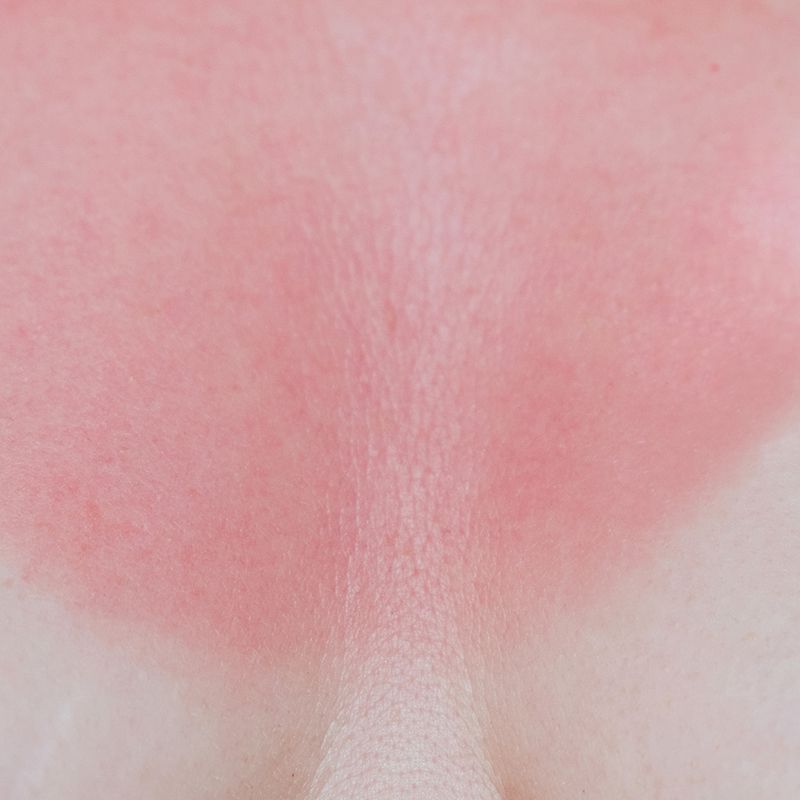12 Dermatologist-Recommended Tips for Healing a Sunburn Fast

Any beauty junkie knows: a sunburn is not a good thing (just like laying out in the sun to tan is not a good thing). We know that SPF is essential for protecting us from damaging sun exposure—which, worst case scenario, puts us at risk for skin cancer. But even the most diligent applier-and-re-applier of SPF has probably missed a spot at some point. And that’s when you need a quick fix, because sunburns really hurt.
But first, what exactly is a sunburn and why do we get them? “Sunburn is an inflammatory reaction of the skin’s outer layers by UV rays,” explains Cambridge, Massachusetts-based board-certified dermatologist, Dr. Ranella Hirsch.
What Is a Sunburn?
Sunburn is an inflammatory reaction of the skin’s outer layers by UV rays. It is characterized by redness, skin peeling, swelling, and blisters. While sunburn can heal, some cells may have mutations that cannot be reversed and could turn cancerous.
“Melanin is a skin pigment that protects the skin from damage caused by the sun. It works by darkening your unprotected sun-exposed skin. Some people have more melanin, and their skin tends to get darker or tan, while others become sunburned. But no matter which your skin is prone to, Hirsch emphasizes, “BOTH are signs of cellular damage to the skin.”
“The sun produces ultraviolet radiation that reaches the skin and damages skin cells. This happens because the radiation causes changes in the DNA in skin cells, which results in the redness of a sunburn,” she explains.
Fortunately, there are a number of things you can do to cool the burn and expedite the healing process. We spoke to a number of top dermatologists to get the scoop on how to deal when you’re already burned—and how to prevent it from happening in the future.
01
of 12
Immediately Remove Yourself from the Sun
Get out of the sun as soon as you see a burn and stay out until it’s completely healed. The rule of thumb, Hirsch says is to stay out of the sun as long as you are still red, pink, or peeling. “When your skin is already battling sunburn injury, it’s much prone to sun damage—more extensive this time,” Henry warns.
02
of 12
Cool the Skin
You’ll want to get some cooling relief to your burn ASAP. Though perhaps we know this intuitively, Henry confirms that “cold helps soothe inflammation, pain, and the stingy, itching sensation of sunburn.” But make sure you don’t apply ice, or an ice pack directly to the skin. “Instead, wrap the cold compress in a towel or thick cloth and limit its application to 15 to 20 minutes at a time to prevent frostbite,” she says, adding that you should wait one to two hours before reapplying it.
A cool shower is also recommended as it can “help wash away any chlorine or salt residue that might irritate your skin more,” she says, noting that you should not, however, stay in the shower for too long, as that can be drying too. Finally, avoid using any harsh soap and do not scrub, both of which Henry says tend to cause further irritation.”
03
of 12
Take a Milk or Oatmeal Bath
Draw yourself one of these sunburn-soothing soaks. Option One: “Finely ground oatmeal (called colloidal oatmeal in drugstores) has anti-inflammatory properties, making it effective at controlling inflammation and itchiness associated with sunburn, thanks to compounds called avenanthramides that block inflammation,” explains New York City-based board-certified dermatologist Dr. Michelle Henry. “Moreover, colloidal oatmeal can be especially helpful for soothing what is known as the Hell’s itch—an extremely painful, unrelenting itch that may happen very rarely a few days after the sunburn.” The cherry on top: cool colloidal oatmeal baths also help moisturize your skin and bolster skin repair.
Burned and no oatmeal in sight? Don’t worry. Try Hirsch’s equal parts milk and cool-water bath. You don’t need to soak for hours, she says. “The milk proteins and naturally-occurring lactic acid are very soothing,” she explains.
04
of 12
Take Ibuprofen or NSAIDS
Turns out more than just topical treatments can help alleviate the pain of a sunburn. “A pain reliever like ibuprofen (Advil, Motrin) or naproxen (Aleve) helps mitigate pain, inflammation, and redness,” Henry says. But, act fast, she says: “The sooner you take it, the faster it will act to reduce your symptoms of sunburn. So, make it a point to take the first dose right away.” After that, you can continue to take as needed and as directed—but make sure not to take without eating something first as that can upset your stomach.
05
of 12
Rehydrate from the Inside Out
Fact: your skin requires much more water when it’s sunburned while it heals. “When your skin is fighting the damage caused by the harmful ultraviolet rays, it needs extra hydration to replenish the fluids it lost while you were out in the sun,” Henry explains. As soon as you realize you’re burned, it’s time to up your water intake. Hirsch notes that there are other ways to up your hydration ASAP too. Gatorade, Pedialyte, and even Pedialyte popsicles can help rehydrate, and “water-laden fruits and vegetables like watermelon and cucumber” can help too.
06
of 12
Hydrate Externally as Well
After showering, use a gentle moisturizer to help lock in hydration. Whenever you shower, gently pat your skin, and while it’s still a little damp, quickly slather a gentle moisturizer (such as from the CeraVe line) to help lock in moisture and help with the dryness that can go hand-in-hand with sunburn. As much as it might feel weird, “continue to moisturize your skin even during the peeling stage of sunburn,” Henry says.
07
of 12
Wear Loose-Fitting Clothing
This one might feel obvious when you’re dealing with a burn, but spare your skin the spandex and reach for loose clothing. Look for things that are not only loose but also “soft, breathable, and as covered-up as possible,” Henry says.
08
of 12
Apply Aloe Vera
Sunburns and aloe are like peanut butter and jelly—most of us know they’re a good match. “The cooling effect of the gel from this cactus plant can help heal first-and-second-degree burns and speed up healing,” Henry explains. Be sure, however, to look for pure aloe vera: “Avoid anything that contains alcohol, as it can cancel out the moisturizing, soothing effects of this plant,” she says. If you’re lucky enough to have access to an actual aloe plant, that’s even better!
09
of 12
Mix Hydocortisone + Aquaphor
New York City-based board-certified dermatologist, Dr. Morgan Rabach recommends this drugstore-friendly blend you can create with things already in your medicine cabinet: Hydrocortisone 1% cream mixed with Aquaphor which, together, “can soothe inflammation and help the skin feel less dry and tight.” (Note: this is only for adult skin.)
10
of 12
Look for Products With Peptides
You’ve probably seen peptides mentioned in high-tech anti-aging skincare products. Turns out they have wound healing properties too. “Peptides are small amino acid chains that are the building blocks of cells, so they work to rebuild damaged cells,” she explains. “We know they also can permeate into the dermis and help boost collagen synthesis.” Rabach recommends peptide-laced products like TNS Recovery by SkinMedica for all her patients dealing with the results of too much sun. We also like M-61’s ultralight Hydraboost Collagen+Peptide Water Cream (which is a bit less of a splurge).
11
of 12
Don't Pick or Peel
Let your skin be—and try not to pick while it heals. “When a sunburn reaches its peeling stage, let the skin slough naturally,” Henry says, and “If you have blisters, do not pick or pop them.” Why? Because “popping a blister increases the chances of getting it infected.” If a blister pops on its own, Henry recommends cleaning it with mild antibacterial soap and cool water and then layering on some petrolatum ointment and covering the site with a sterile, nonstick band-aid.
12
of 12
Lastly, Prevent a Burn From Happening Again
Make sure to exercise caution before going back in the sun. Henry emphasizes the importance of “wearing sun-protective clothing, including long sleeves, pants, and a broad-brim hat,” as the most important preventative measure against sunburn. This should, of course, be coupled with applying a broad-spectrum sunscreen with a high SPF when you’re out in the sun—preferably SPF 30 or higher. Remember to reapply sunscreen every two hours especially after swimming or sweating!







